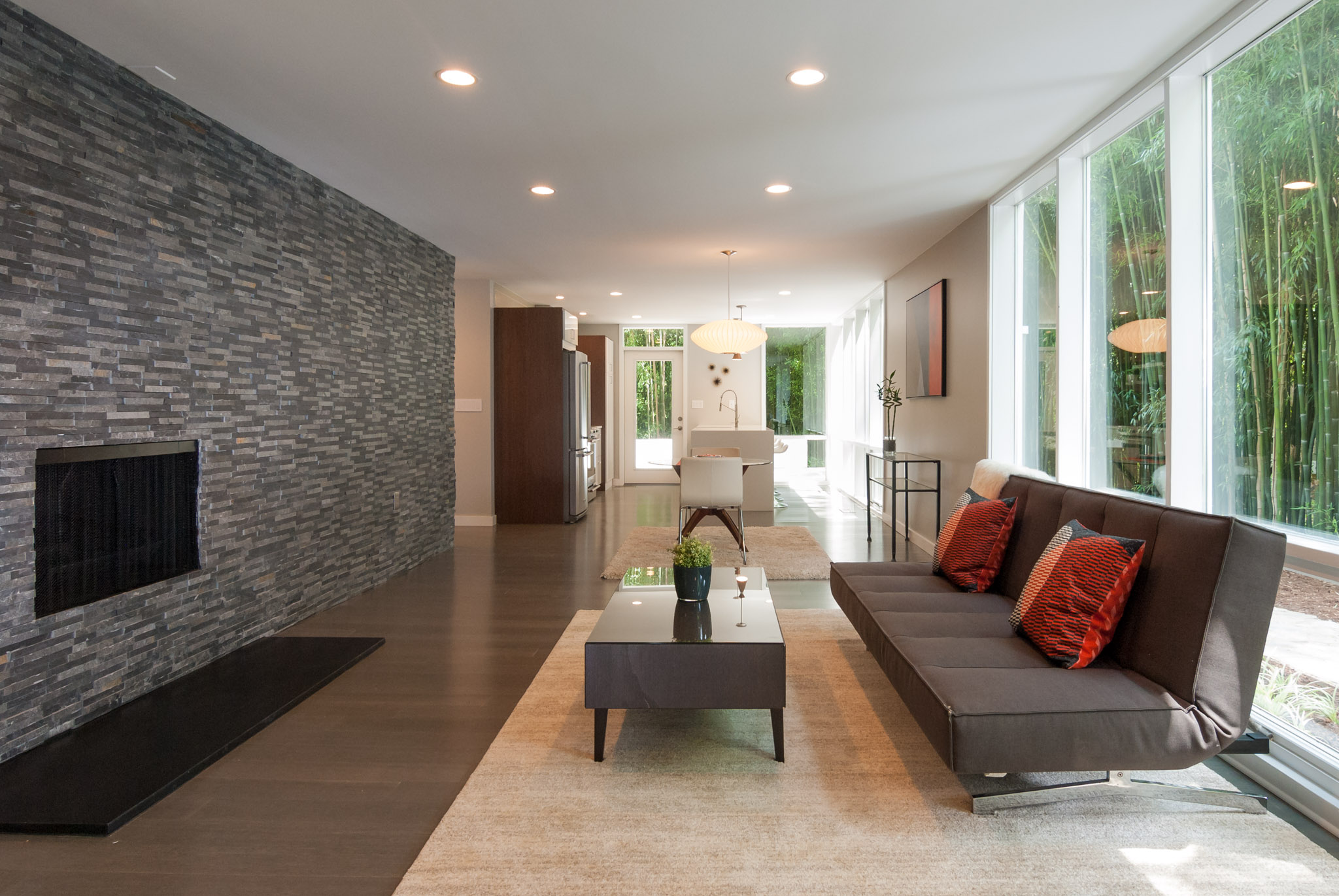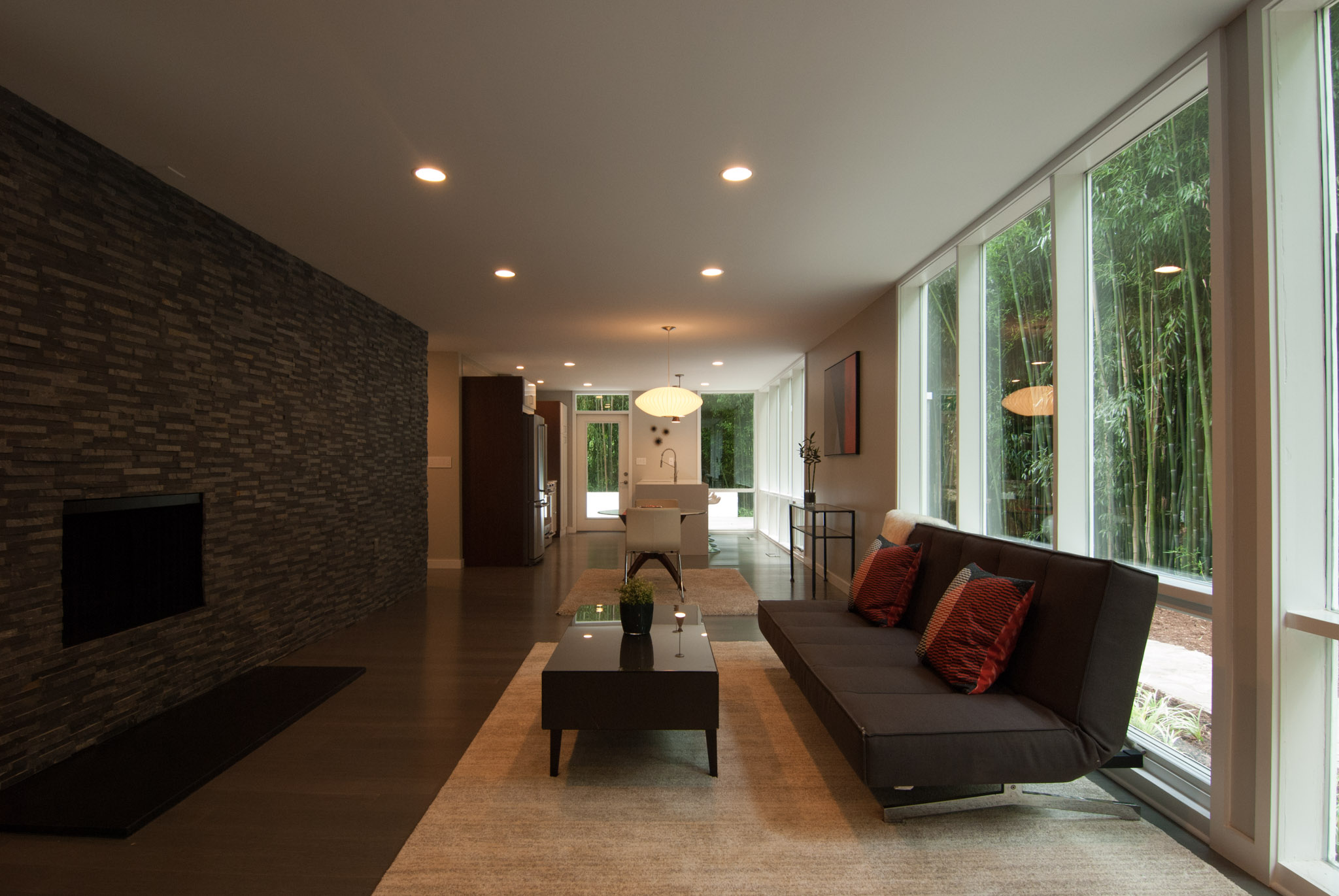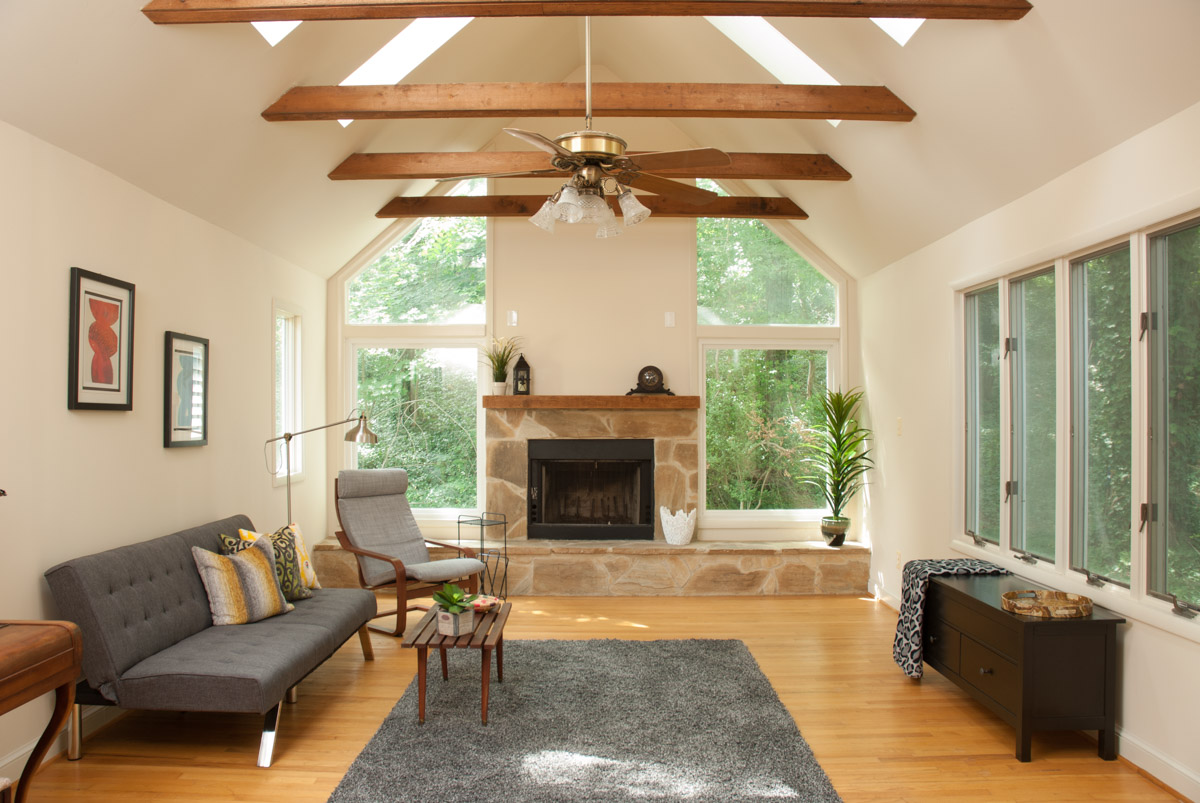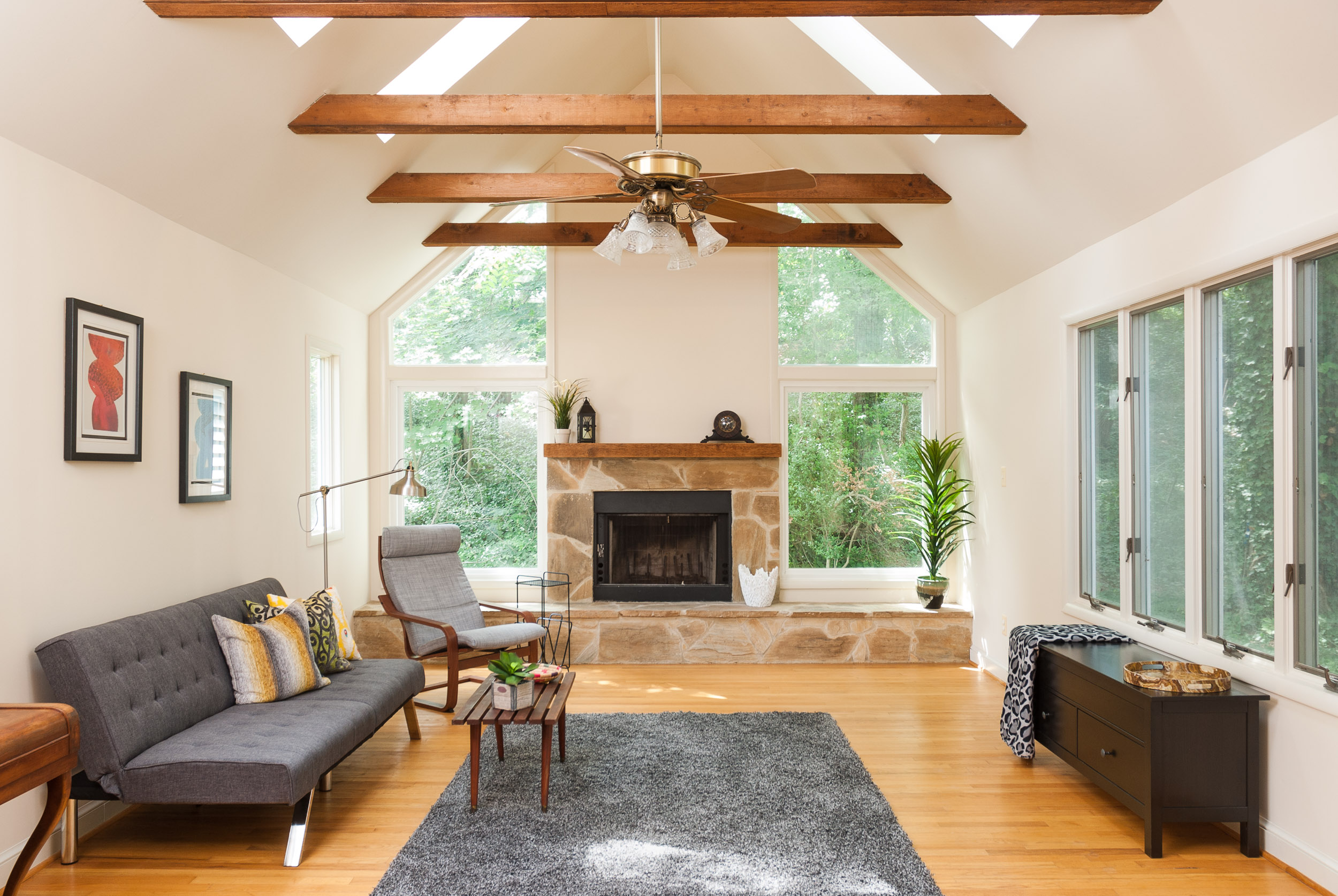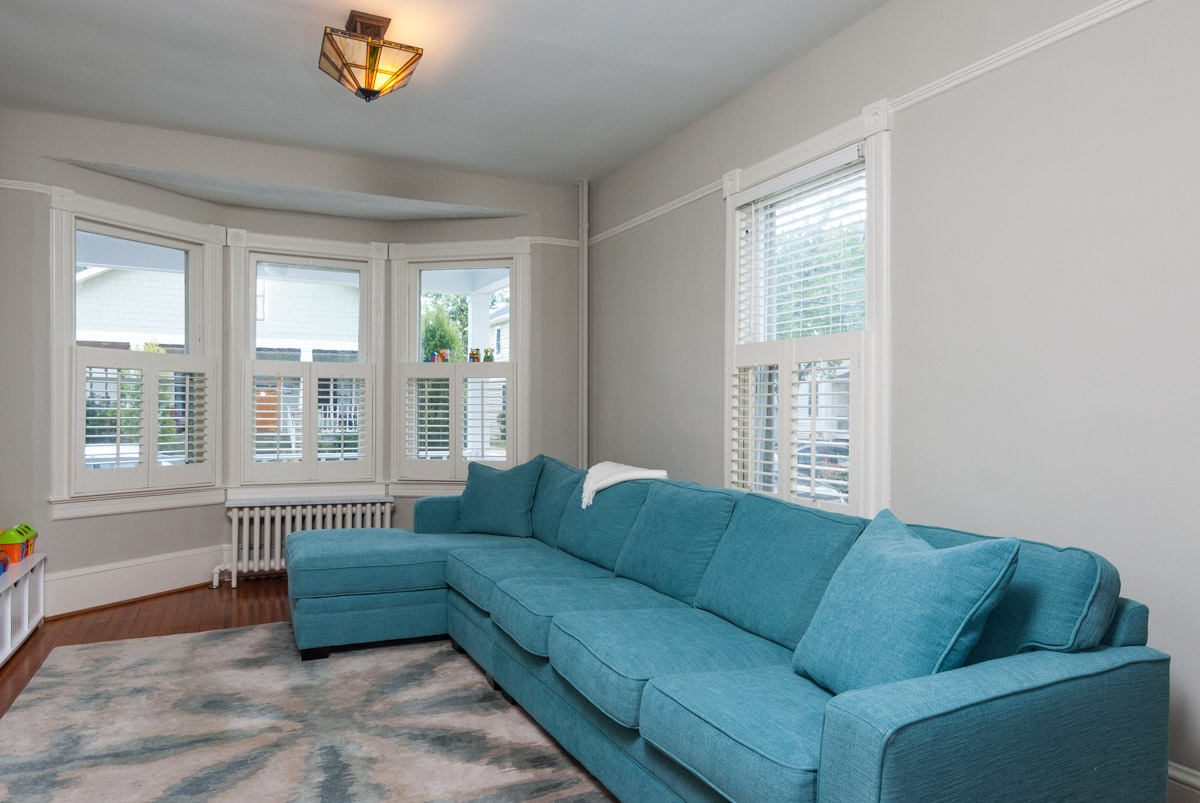Hollin Hills is a unique little community situated a little south of Old Town Alexandria in Virginia. It was one of the first planned communities to be constructed after World War II. It is comprised entirely of mid-century modern homes designed by Charles Goodman, so when I found out that I would have the opportunity to photograph one of these homes, I was ecstatic.
We'll be looking again today at the work of house flipper extraordinaire, Teresa Bosch. The bones of the house are the same as they were half a century ago, but Teresa and her team did a beautiful job of remodeling the home. I won't go as in-depth with the process on this one, but I do want to point out a few things that I had to do in order to create these photos.
Take a look at the two living room photos above. One is the natural light shot, and the other is what it looked like once I added my lights to the scene. I used two large umbrellas outside, coming through the windows near the couch to camera right, which simply augmented the existing natural light. Then I scraped a gridded speedlight with a warming gel across the fireplace to bring out the definition in the fireplace and the stonework.
In addition to the interior shots and the normal exteriors, I also did a twilight exterior shoot. On a house like this, it would really be a crime not to do a twilight shoot. The beauty of these homes is in their floor-to-ceiling windows and the houses just glow beautifully when the sun goes down.
Twilight photos are fairly simple to make, but you have to be ready for the light when it is just right. That means a lot of running around to make sure that all of the interior and exterior lights are on, so that you can be ready during that 10-15 minute window when the natural light comes into balance with the home's light fixtures. The photo above was a crucial shot, because Teresa really wanted to show how the home's tower became illuminated at night. The two windows that you can see at the right (on either side of the chimney) are at the top of the hall bath (see below). Teresa's team put an LED strip up there in order to create a cool vibe at night, and it came through very nicely. The problem was the far left window which is above a hallway. Even with the hall light on, it wasn't bright enough to appear in the photo. In order to get that window to light up (as seen in the photo above), I put a speedlight in the hall with a warming gel. It was triggered via PocketWizard radio remotes (with their impressive 1600 ft. range).
Twilight photos can really transform a house. Check out the daylight exterior shot below from a similar angle. The house looks nice enough, but you're at the mercy of some harsh shadows and the windows look uninviting.
I hope you've enjoyed the photos of this house as much as I enjoyed shooting it. Be sure to keep an eye out for more house flips from Teresa in the future. Her work is stunning!


